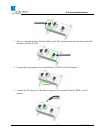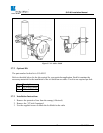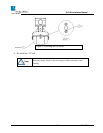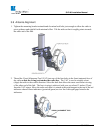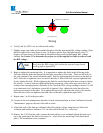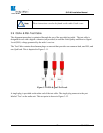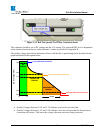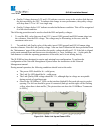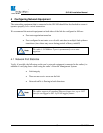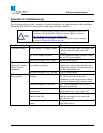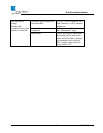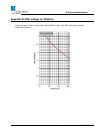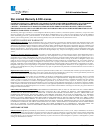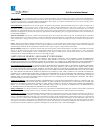
TM
SLE100 Installation Manual
31 590-00532, rev A
Appendix A: Troubleshooting
The following table provides a summary of possible problems you might encounter while installing a
BridgeWave SLE100 link, along with possible causes and their solutions.
Extensive troubleshooting support and knowledgebase articles are
available at the BridgeWave eSupport knowledgebase online at:
http://bridgewave.com/support/kbrma.htm
Contact BridgeWave support to obtain a login account by sending
an email to support@bridgewave.com
Problem Possible Cause Resolution
No power to radio Wrong polarity of supply voltage Use a DVM to determine the polarity and
voltage on the DC cable at the PoE
Injector.
AC to DC adapter FUBAR Check input and output voltages to/from
the AC-DC power supply
Incorrect wiring of CAT5 Cable Check wiring pinouts
Copper interface
light not lit at radio
and/or network
equipment.
Error in the configuration of the
networking equipment
Verify the configuration of the network
equipment is consistent with radio unit’s
copper port settings. The radio unit is set
for auto-negotiation only.
Incorrect wiring of CAT5 cabling Check wiring pinouts
RSL voltage lower
then expected
Incorrect calculation of link
distance
Verify that the calculation tool used and
the GPS used both use the same
annotation system (degree hours minutes
seconds or degree with a decimal value)
Antennas aligned on side lobes Use Visual Alignment Tool to verify
direction of antennas.
Radios set to different
polarizations
Verify that both radios are set to the
same polarization. (See section 3.4)
Installed two high or low band
radios in one link
Verify that one end of the link is high
and the other end is a low band radio
(See Section 3.5)
Link exceeds maximum specified
range
Verify path distance is no longer then ½
mile (800 meters)



